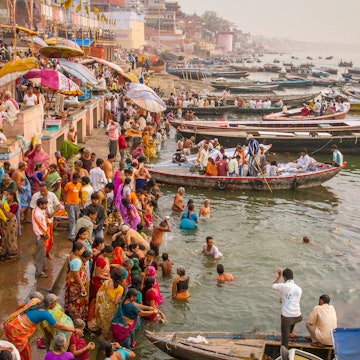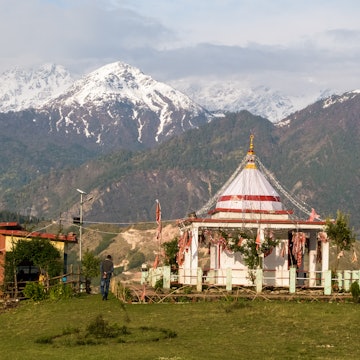

The Nilgiri Mountain Railway offers sweeping views of the Western Ghats. Jeeshan2920/Shutterstock
On a crisp summer morning, a tiny passenger train snakes through the rolling hills around Ooty (Udhagamandalam) in South India. The train is moving at a painfully slow pace, but the passengers don’t seem overly bothered by the speed (or lack of it). Instead, they are captivated by the passing scenery – the lush hills, the rolling tea gardens and gurgling waterfalls, the countless stone bridges and dark tunnels.
Painted blue as an ode to the blue mountains known as the Nilgiris – part of the larger Western Ghats range that spills across India's southern states – this is the Nilgiri Mountain Railway, a historic narrow-gauge railway line that celebrated its 125th anniversary in 2024.
Along with the Darjeeling Himalayan Railway and the Kalka–Shimla Railway, the Nilgiri Mountain Railway forms part of the UNESCO World Heritage-listed triumvirate known as the "Mountain Railways of India," described by UNESCO as “living examples of the engineering enterprise of the late 19th and early 20th centuries.”
What's the history of India's toy trains?
Due to their small size and the narrow-gauge tracks they run on, these historic mountain railway systems are popularly referred to as “toy trains.” All three mountain railways are a legacy of British rule in India – a fact borne out by the fancy English names of stations along the routes, such as Wellington, Lovedale and Summer Hill.
The mountain railways were originally built to carry goods and people across treacherous highland terrain, and impressive feats of engineering were required to lay the tracks across steep mountainsides and create tunnels through sheer rock walls.
With the arrival of newer and faster means of transport, these miniature trains were relegated to the status of novelty routes, but they have not been forgotten, and continue to serve as popular tourist attractions. They also live on in the popular imagination, making regular appearances in Bollywood movies. Who could forget the sight of Shah Rukh Khan dancing precariously on the roof of the toy train chugging through the Nilgiri hills in the movie Dil Se..?
If you travel by toy train, be ready to experience the joys of slow travel – this is not the ideal mode of transport if you need to get from Point A to Point B quickly. If you're in a rush or short on time, you may be better off taking a cab, bus or shared 4WD to your destination, but taking things slowly is literally the point of a trip by toy train.

Why travel through India by toy train?
India's toy trains are universally loved – by kids, for offering the thrill of a train ride in miniature form, and by adults, as a reminder of a time when slow travel was the norm. It is this mix of excitement and nostalgia, combined with the train's vintage appeal, that makes a ride on one of India's toy trains such an unmissable travel experience.
As an added bonus, there's the ever-changing mountain scenery and the chance to get off and walk alongside the train on particularly slow stretches. Many of the stations are relics from the British colonial era, serving as little time capsules of the region’s history and culture. As you rattle through them, look out for old-style ticket booths, displays of old photos and small museums.
Where are the top toy train routes in India?
India's toy trains climb into the foothills of the Himalayas in the north, and through the mountains of the Western Ghats in the south. Services run through the year, come rain or shine, but keep in mind that schedules and services routinely get disrupted by heavy rain and snowfall. It's always a good idea to check online for weather and trip updates before you board the train.
Whether you're a railway enthusiast or someone who just loves taking in the scenery, here are the top Indian toy train trips to add to your itinerary, and the best times to enjoy them.
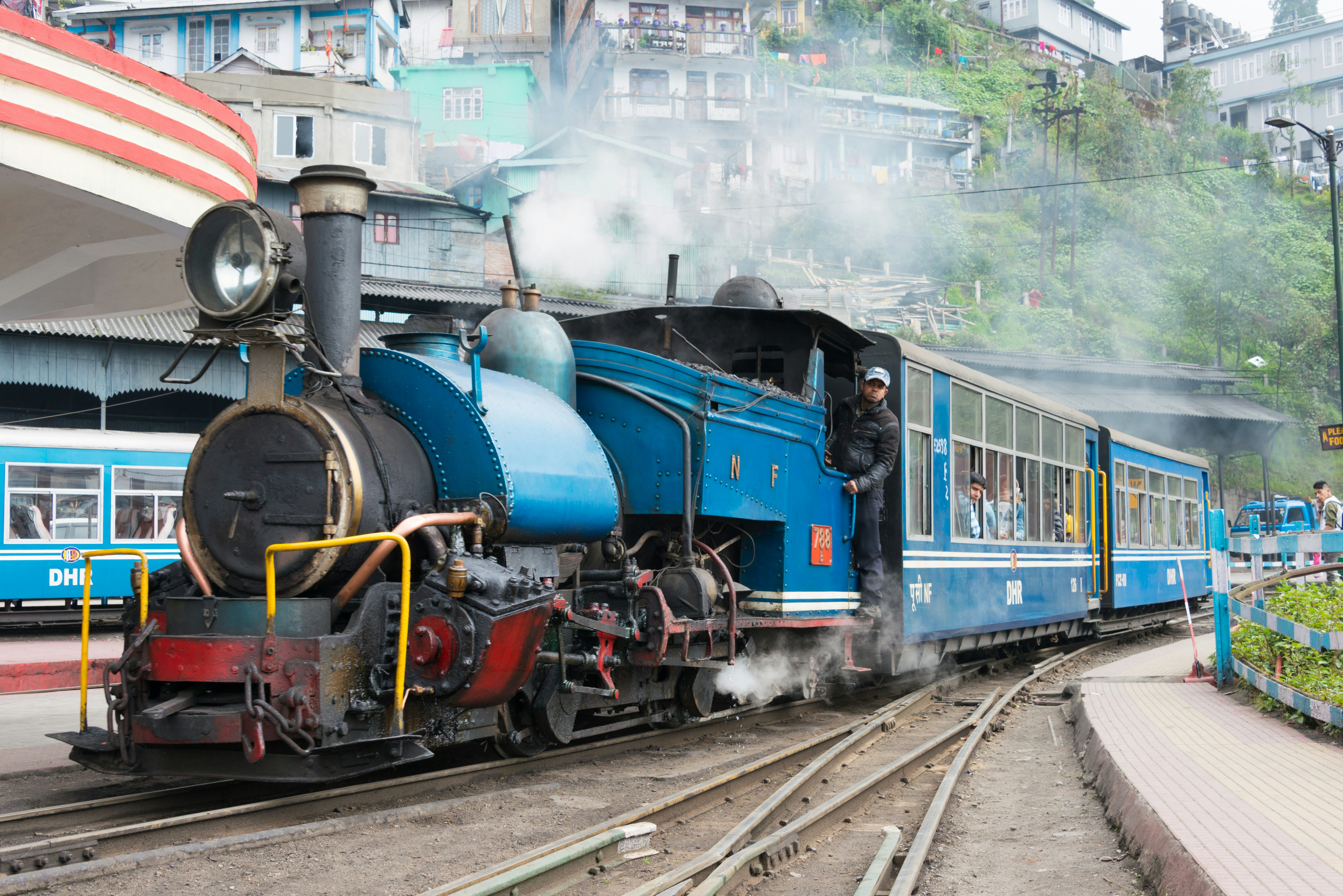
Darjeeling Himalayan Railway
Where: West Bengal
When: October to March
Operating continuously since 1881, the Darjeeling Mountain Railway is the granddaddy of Indian toy trains, and this was the first to get UNESCO World Heritage status in 1999. It runs a distance of just 88km (55 miles) between the towns of New Jalpaiguri (NJP) and Darjeeling in West Bengal.
The twisting route passes through stunning scenery but it takes more than seven hours to complete the trip. On a clear day, there's a good chance of seeing Khangchendzonga (Kanchenjunga), the world’s third-highest mountain peak, as you trundle uphill.
For those pressed for time, there's the option to take a quick round-trip from Darjeeling to India’s highest railway station at Ghum, at an altitude of 2258m (7408ft). Operated using a vintage steam engine, the so-called "joy ride" service covers roughly 13.8km (8.6 miles) in two hours, with stops at Ghum station and the famous Batasia Loop, where the train completes a 360° loop.
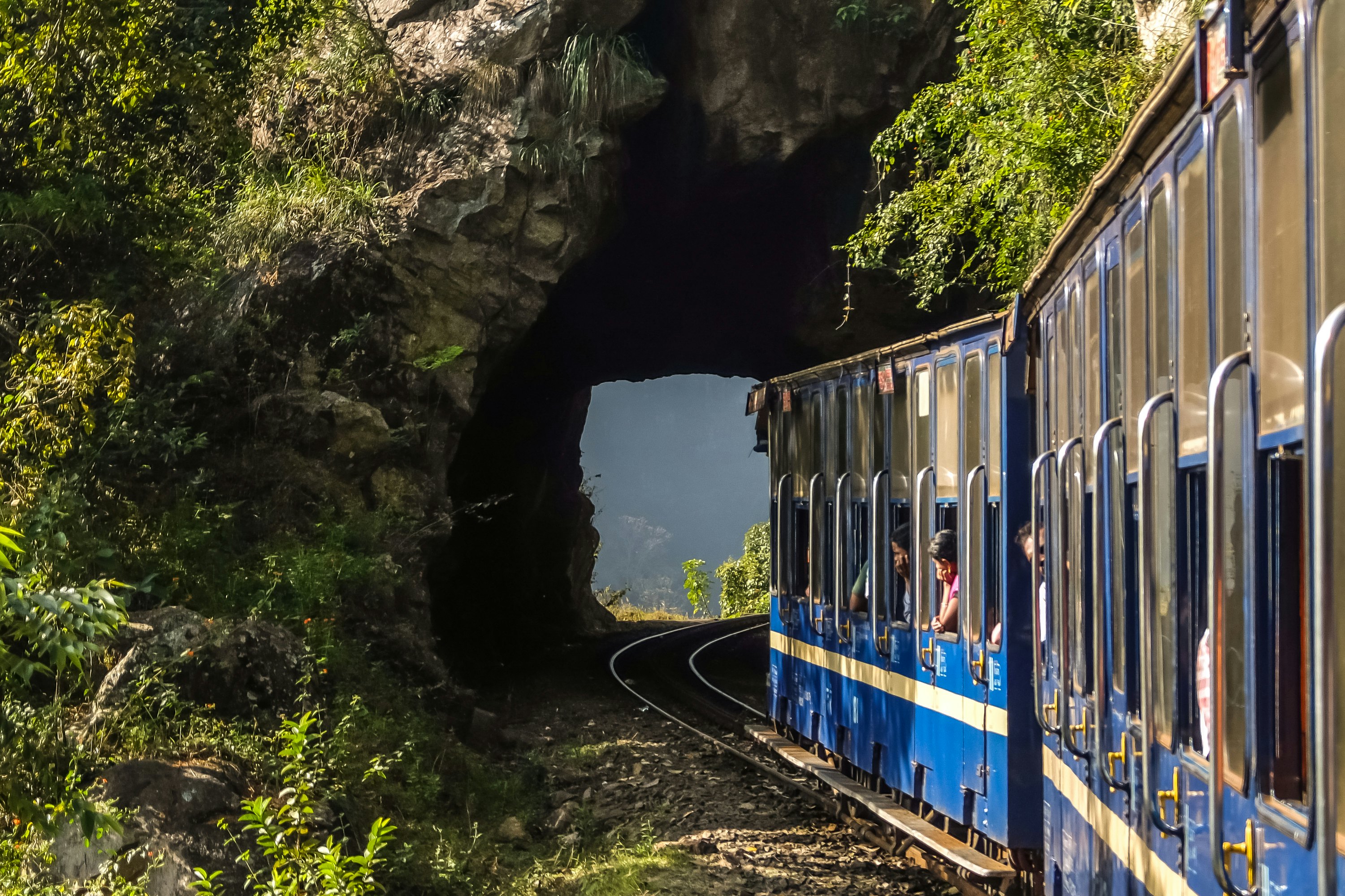
Nilgiri Mountain Railway
Where: Tamil Nadu
When: March to May
It may be difficult to imagine, but this quaint little train manages to climb up Asia’s steepest railway gradient on its route from the Mettupalayam valley up to the hill town of Ooty in Tamil Nadu. The Nilgiri Mountain Railway takes five hours to complete a trip of just 46km (28.5 miles), but it traverses 250 bridges, 208 curves and 16 tunnels along the way.
The scenery is picture-perfect – the train rolls past eucalyptus forests, green tea gardens and small towns that seem plucked straight out of a British Raj-era novel. Be sure to try the piquant masala vadai (lentil fritters) sold by wandering snack vendors, and wash your snack down with a cup of piping hot chai (sweet, milky Indian tea).
Kalka–Shimla Railway
Where: Himachal Pradesh
When: Year-round
Serving the Himalayan foothills in Himachal Pradesh, the Kalka–Shimla Railway opened in 1903, and it runs for five hours, covering 97km (60 miles) between Kalka and Shimla, the summertime capital of British India. Passing through 919 bends and 107 tunnels and crossing 850 bridges, this was considered one of the trickiest rail routes in India to plan and build.
The train passes through uncrowded minor hill stations such as Solan and Shoghi, and stops for a while at Barog, where you can hop off for photos and snacks. Look out for the spiral loop near Solan, where the train curves around the hill, rather than crawling painfully up the sharp incline. While the views are always special, winter travel brings with it the joy of seeing pine forests dusted with snow and distant snow-capped peaks.
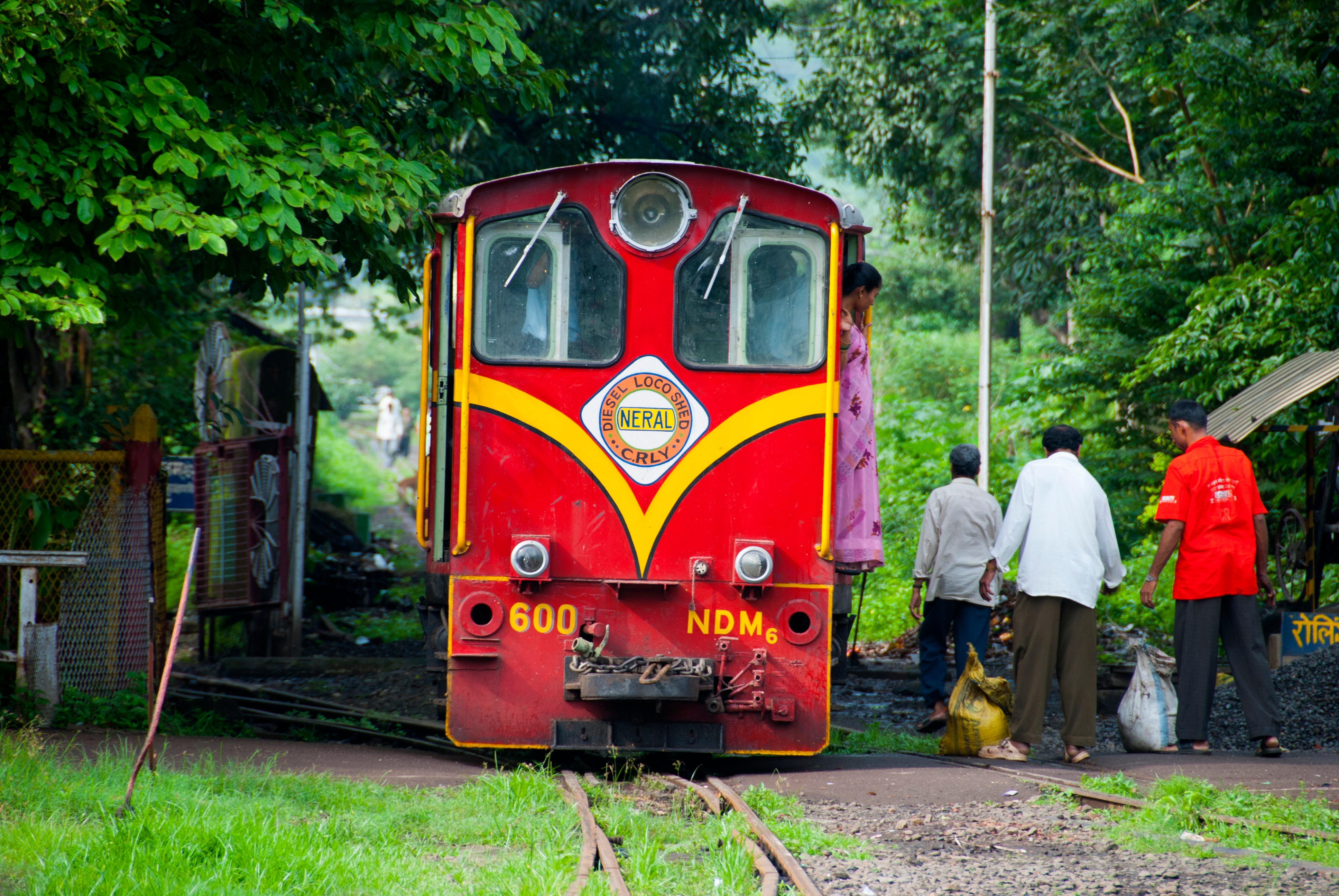
Matheran Hill Railway
Where: Maharashtra
When: October to March
This dainty toy train weaves through the Western Ghats in Maharashtra, taking tourists from Neral, near Mumbai, to the quiet, pedestrian-only hill station of Matheran. The 21km (13-mile) journey takes around 2½ hours and the train makes just three stops along the way, but the scenery is glorious.
Kangra Valley Railway
Where: Himachal Pradesh
When: Year-round
Running from Pathankot in Punjab to Joginder Nagar in Himachal Pradesh, this is one of the longest toy train routes, and the train takes eight hours to cover 164km (102 miles), with 33 stops. Expect views of crystal-clear streams, stone bridges, local temples, rolling tea estates and the Dhauladhar mountain range. This railway is now being considered for the UNESCO list.
Bilimora to Waghai Train
Where: Gujarat
When: November to February
While not strictly a mountain railway line, this heritage train runs through the dense forests of Dang district in the western state of Gujarat, winding past the settlements of Adivasi (tribal) people. It's worth snagging a seat in the Vistadome coach with large picture windows on this train, which is back on the tracks after a brief hiatus.

What to expect on a toy train ride
There is no catering on board these miniature trains, so carry snacks, especially if traveling with children. However, vendors pop up with hot and cold snacks and beverages at various stops, so you'll never go hungry. Carriages tend to be small and short on space, but that's all part of the mountain railway experience.
Steam engines still operate on lines such as the Darjeeling Himalayan Railway and Nilgiri Mountain Railway, but many trains are today pulled by diesel engines. On some routes, you can book a seat in a special Vistadome carriage with extra-large windows.
How to book a toy train journey
Tickets for toy train services tend to be in demand throughout the year, especially during the school holidays in the summer and winter, so it's a good idea to book in advance through a local travel agent, or online via the Indian Railways IRCTC booking portal. Be aware that the IRCTC website is not particularly user-friendly for foreign travelers booking from outside the country, with a complex registration process.
Fares tend to be higher than for standard rail journeys. For example, on the Darjeeling Himalayan Railway, the fare from NJP to Darjeeling is ₹1400 (US$16.40) in First Class, or ₹1500 (US$17.55) for a seat in the air-con Chair Car. If you book through an agent, there'll be an additional booking fee.
In case you are unable to secure tickets ahead of time, head to the station a couple of hours in advance to buy an "unreserved" ticket and hop onto the no-frills coach set aside for such passengers, if one is available. The experience will be just the same, but without the comfort of padded seats.








